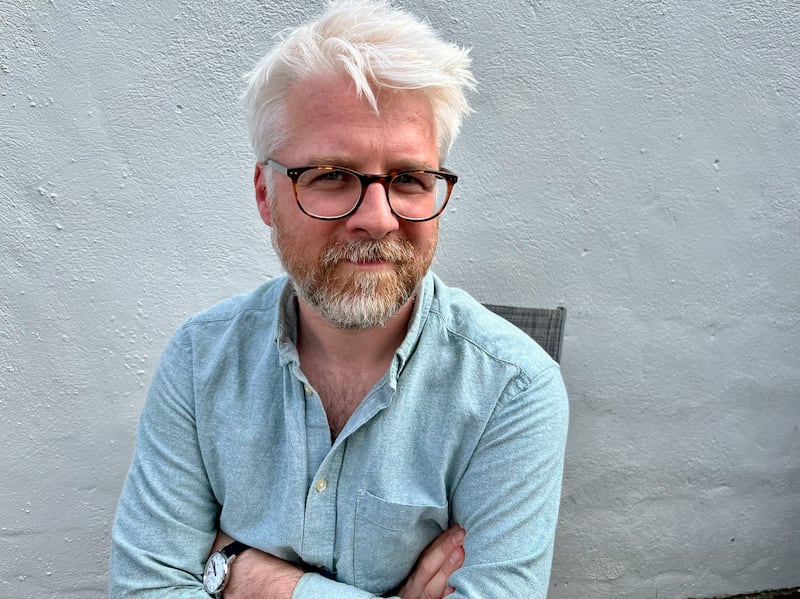“This pilot has changed my career. It came at a point where I was beginning to seriously question the sustainability of being an artist in Ireland,” Eoghan Carrick said recently. “It has allowed me to think more ambitiously, to plan better, take more artistic risks. So, rather than thinking about the next months to a year, I’m thinking about the next few years. Artists are struggling with all of the things everyone else is struggling with. Their situation is just compounded by precarious working conditions and low or no pay.”
Carrick, an award-winning director, designer and dramaturge who works in theatre and opera in Ireland and abroad, is one of 2,000 people on the three-year pilot of the Government’s Basic Income for the Arts scheme, which began just over a year ago. Established after it was the key recommendation of the recovery taskforce set up by Minister for Culture and Arts Catherine Martin during Covid, when the problems of low pay and income instability in the sector became particularly acute, it pays each participant €325 a week.
Carrick joined Martin and others last month to help assess the pilot’s impact. “We’re seeing it’s allowing the artists and creatives to focus on their artistic output,” the Minister said. “I would like to see the basic income making the arts a realistic career choice. This is a signature innovation of the Government in its support for the arts and is an absolutely key priority for me.”
The scheme, which recognises that a vast body of underpaid or unpaid work goes into making art that society enjoys, became a key initiative of Budget 2022, with a first-year allocation of €25 million. More than 9,000 artists applied to take part in the pilot; of the 8,200 who were deemed eligible, 2,000 were randomly chosen to receive the payment. The gross cost to the State is a relatively modest €105 million over three years.
Tracking the impact of the Basic Income for the Arts, as well as artists’ living conditions in general, is “of equal importance to the actual payment – and may actually be of more importance by the time we get to the end of this”, according to Martin. She expects it to be “undeniable at the end of this three years that it needs to be rolled out to every artist”.
Coupled with ending reliance on social protection by our entire sector, you can see the case for this being a net benefit to the State
— Angela Dorgan, First Music Contact
Every six months, the scheme compares how the recipients are faring compared with a smaller control group, who don’t receive the payment. (Instead, they’re being paid €650 a year. “We’re deeply grateful to them,” Martin said. “Their data is invaluable and will inform future government policy.”) The research, which enables the pilot to be “a realistic, evidence-based project”, assesses the payments’ impact on creative practice, income, time use, job quality, wellbeing and mental health, among other areas.
“The data we are publishing makes clear how difficult it is to pursue a career in the arts,” Martin said. “That’s the stark reality. The papers also show basic income does appear to be having a positive impact on those receiving it.”

The findings so far include that the artists on the pilot have been able to spend an extra 3½ hours a week on their creative practice and needed to work three hours less in non-arts jobs. They are also 12 per cent more likely than the control group to be able to sustain themselves through arts work and 19 per cent less likely to have difficulties making ends meet. Life satisfaction has increased; depression and anxiety have decreased. Each month, the artists have also spent €353 more on equipment and materials, €18 more on advertising and marketing, €34 more on work spaces and €24 more on work travel compared with the control group.
One of the findings that jumped out at Maria Fleming, who chairs the National Campaign for the Arts, is the impact on artists’ home-ownership levels. Only 36 per cent of artists are homeowners, compared with 66 per cent of Irish households generally. (The research also records where artists live: Leitrim has 72 per cent more artists and arts workers than would be expected given the county’s population; Cos Sligo and Wicklow have 43 per cent more, Co Galway has 39 per cent more, Co Dublin has 33 per cent more and Co Clare has 14 per cent more. Other findings include the fact that 87 per cent of artists have a third-level education.)
“I’m trying to imagine an art sector in Ireland that doesn’t have a scarcity mentality – and the difference that would make if we all could dream bigger,” she said.
“Covid wasn’t good for a single artist, but it focused everybody,” according to Angela Dorgan, who is a previous chair of the National Campaign for the Arts and was on the recovery taskforce. That group represented the first time, in her 27 years working in the arts, that “everybody had come together under one single issue”. Different types of arts workers “have different challenges, but the one single issue we all acknowledge is that to write a book, to write an album, to prepare an exhibition, to rehearse a play, to write a play, artists were working for free for a big chunk of the life cycle of their work”.
After years of urging governments to adopt such a scheme – Social Justice Ireland and Basic Income Ireland also worked on the concept – it was “such a relief to see it’s working”, Dorgan said. “We were speaking in a vacuum until now. For me the most impactful, and joyous, statistic was the 10 per cent decrease in depression and anxiety. Because that’s what we were hearing, email after email, conversation after conversation.”
Dorgan, who is chief executive of First Music Contact, a resource organisation, has spoken with many musicians about the pilot scheme, and “anecdotally, before a penny dropped in their account”, they had “that feeling of: ‘I have to panic less now. For the next three years I get to take a deep breath, and put that breath into my work.’ That’s really encouraging.”
She said a basic income may ultimately be at least cost-neutral to the Government. “When this is a reality for all artists, we’ll see the production of artists going up, life satisfaction, the reinvestment into each other and into the economy. Coupled with ending reliance on social protection by our entire sector, you can see the case for this being a net benefit to the State.”
Dorgan added, “I’m seeing report after report of how brilliantly the global music industry is doing, and how great the profits are, and yet the other reports on my desk” – including the results of the first batch of research on the pilot – “show the low incomes and living conditions of the artists creating the work.”
Martin said the current Government “has done more than any other to demonstrate to artists – and I hope artists feel – that you are valued, you are essential to the fabric of our being here, that it’s not just rolling out our artists at key moments, but that we value them and the contribution they make to enhancing our lives all the time”.
Low and precarious income is “an issue for artists across the world”, she added. “There’s a lot of international interest” in how the Irish pilot scheme is working out. “I’m really proud that Ireland is leading the way.”
According to Dorgan, “People are also saying, ‘Of course it was going to be Ireland. Who else would it be that would kick this off?’ It will have a domino effect in other states, who will see Ireland did a trial, got the data, and they’re now rolling it out to all artists. If the information continues on the vertical, it’s going to be very hard in future to argue against this.”
I hear and see the range and scale of the problems on an unfortunately regular basis. It costs more to make art now. It costs more to tour it
— Director and designer Eoghan Carrick
It’s still early days. “It was difficult to shake off all the ingrained habits and approaches I’ve accumulated,” Eoghan Carrick said about the first six months of the pilot. “As artists, we often work with a sense of financial precarity. More or less all the time, actually. There’s no salary. Some projects take longer than others to make. And you need time to develop your practice so the work you make can evolve. With the precarity it’s stressful and, I guess, often counterintuitive to making art. It creates burnout and, ultimately, a lack of diversity in the industry.
“With the stability the pilot afforded me, I’ve been fortunate to be able to think about creating work that’s both creatively and financially more sustainable. I’ve spent time building my practice, taking more risks in my work, planning across a longer timeline, and internationalising my practice, so what I make in Ireland gets to spend additional time in front of audiences elsewhere. Without it, I know I would be jumping from project to project to survive, because that’s what I was doing before.”
Carrick added that, as chairman of the Praxis artists’ union, “I hear and see the range and scale of the problems on an unfortunately regular basis. It costs more to make art now. It costs more to tour it. We’re struggling with diversity. Disabled artists have to fight for equal access. We’ve lost a lot of cultural spaces. In general, the cost of living is going up and artists are being paid the same or less, so artists can’t afford to work in the industry or live where they want.”
The Basic Income for the Arts scheme “allows those financial constraints to be less. It means there are more diverse voices and approaches in the work we will get to see. I feel the 2,000 people on the pilot have been given a taste of a better way to live and work. It’s not one that removes all the difficulties of making art. But it removes some of the financial precarity around it, which is an extraordinarily freeing feeling. I hope the pilot is built upon, just so that more people get to experience that.”











